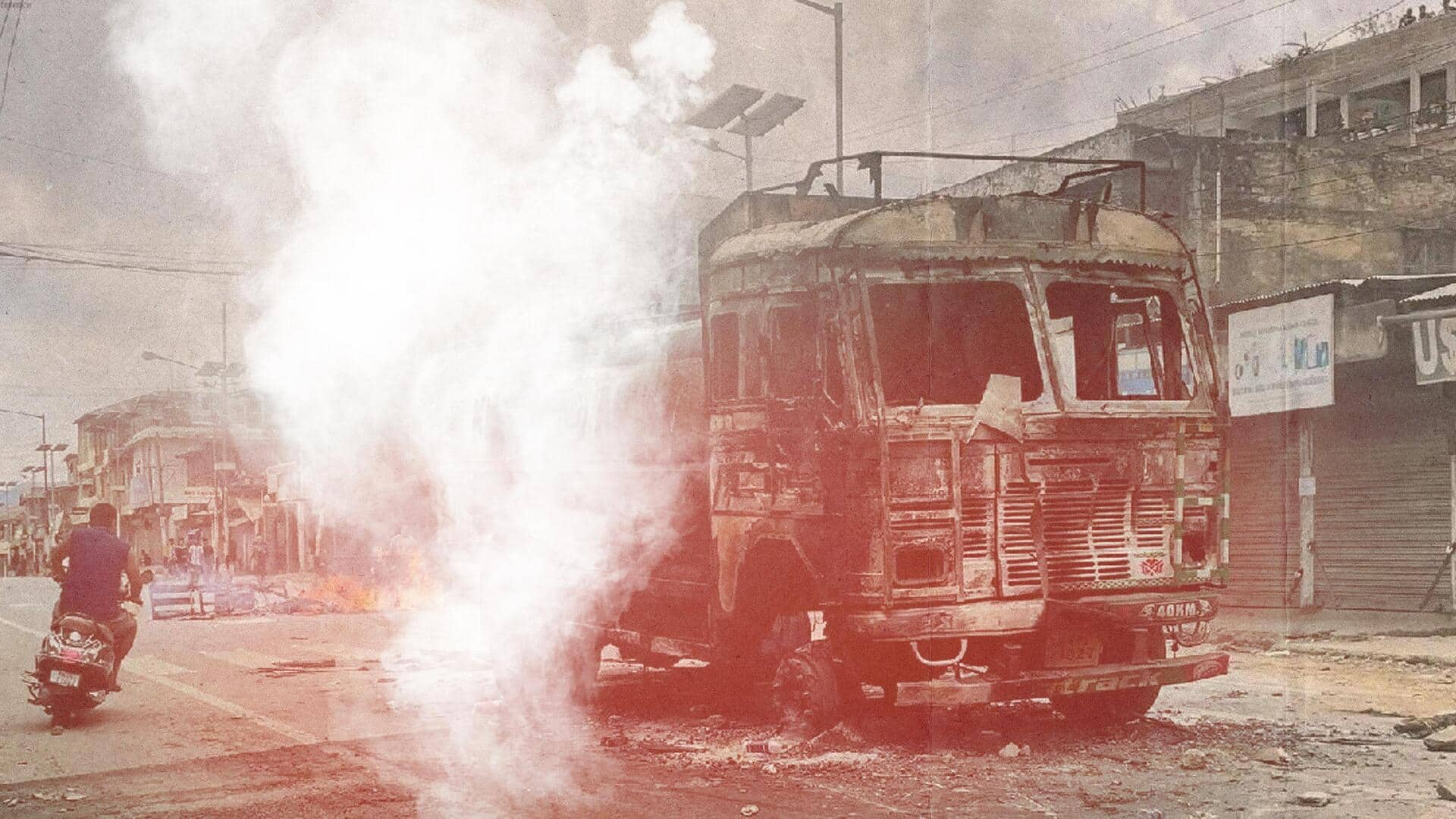
What triggered Manipur's ethnic violence
What's the story
Violent ethnic clashes have engulfed Manipur for nearly three months, resulting in at least 147 deaths and the displacement of over 70,000 people. For decades, the state has been plagued by insurgency, with four ethnic clashes erupting in the 1990s. Although there are a host of reasons behind the clashes, let's look at the immediate factors that played a role in reigniting the violence.
Context
Why does this story matter?
The Meitei community, which forms the state's majority, has been demanding Scheduled Tribe (ST) status, which will allow them to settle in Manipur's hilly areas. It has accused the tribal Kuki-Zomi communities of sheltering cross-border infiltrators from Myanmar and Bangladesh who engage in poppy cultivation and drug trade. Meanwhile, tribal groups argue that granting Meiteis ST status will strip away their ancestral land.
Myanmar
Exodus due to 2021 Myanmar coup
While illegal immigration is an issue along many stretches of India's border, the 2021 coup in neighboring Myanmar catalyzed infiltration. People fleeing violence from Myanmar escaped to forests, which led to the creation of new hamlets. To prevent the immigrants from becoming Indian citizens, the Centre took steps to collect their biometrics and put them on the "negative list."
FMR
Free Movement Regime allows people 16km inside border
The India-Myanmar border's Free Movement Regime, enforced since 1968, allows people from either side to enter 16km inside any border without any passport or visa for 72 hours. Reports say the drug trade has grown exponentially since the Myanmar exodus. The quantity of drugs seized in 2020 was 1,996kg, which jumped to 2,707kg in 2021 and 10,232kg in 2022.
Information
FRA provisions allow tribal communities to settle in forested areas
Notably, tribal communities across the country have disputes with the government over settlement in areas declared as reserve forests. While some provisions under the Forest Rights Act allow tribal people to settle in forested areas, they are often branded as encroachers by the government.
Revenue village
Manipur minister announced hamlets to be recognized as revenue villages
One of the reasons behind the Manipur violence could be the announcement by a cabinet minister to recognize the hills as revenue villages without any government approval, News18 reported. This angered the Meiteis, who mostly reside in the valley and claim a scarcity of land due to illegal immigration. The laws allow only tribals to settle in the hills—which cover roughly 90% of Manipur.
Eviction
Manipur government carried out eviction drives in tribal villages
In April, the Manipur government notified several villages inhabited by tribal people for eviction, stating that they were encroaching on the Churachandpur-Khoupum protected forest. The government declared all the houses built after 2021 as illegal and liable for eviction without consulting the residents. It reportedly carried out eviction drives and sought to identify "illegal immigrants" in the area, following which protests erupted.
Court
Manipur HC backed Meiteis' demand for ST status
Furthermore, the same month, the Manipur High Court backed the Meiteis' demand for ST status without consulting the Centre, leaving the tribal communities furious. The Supreme Court pulled up the HC over the judgment. Regarding the tribal communities' appeal for the Constitution's Sixth Schedule in the hill districts, the SC earlier noted that they remained backward compared to Manipur's non-tribals due to their isolation.